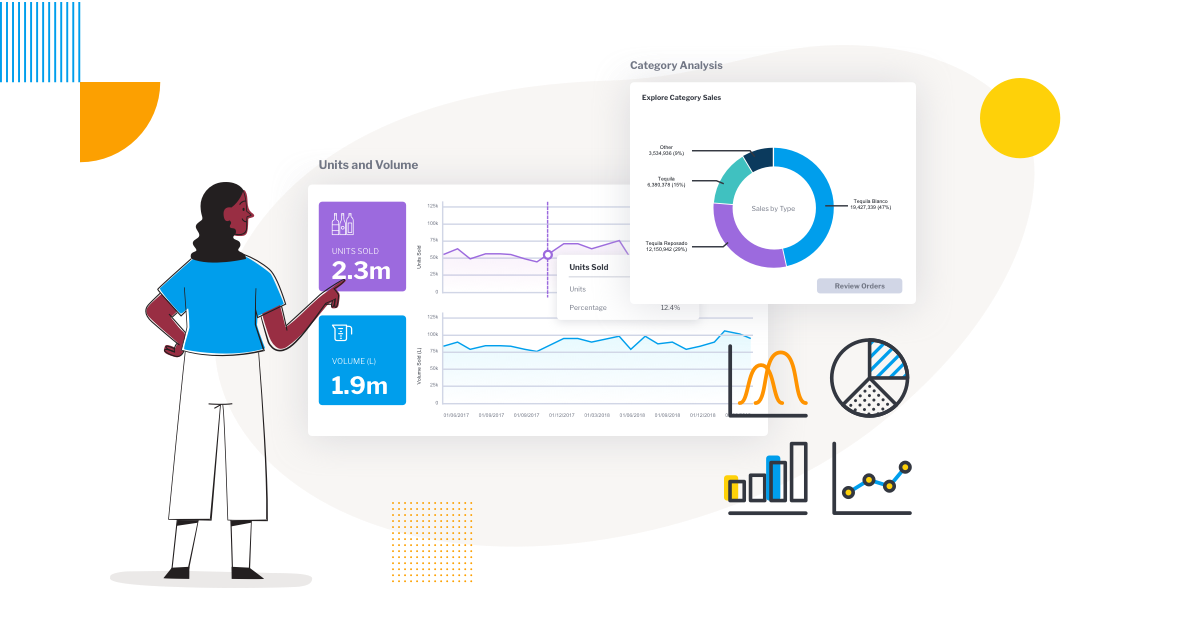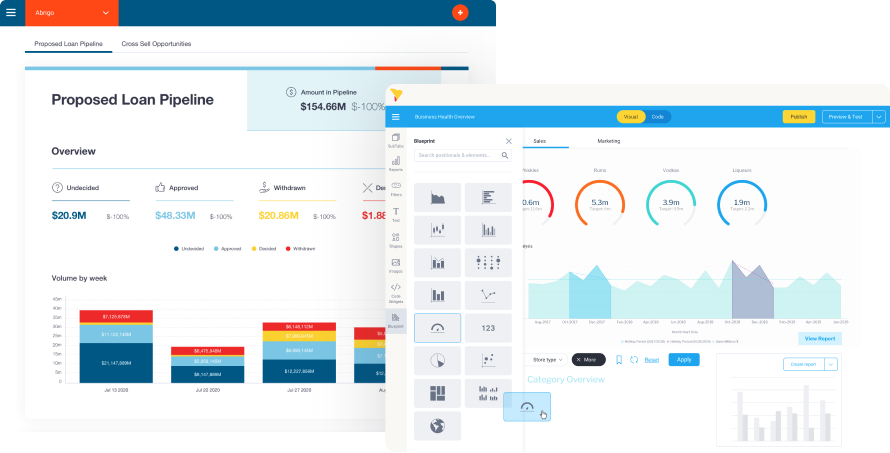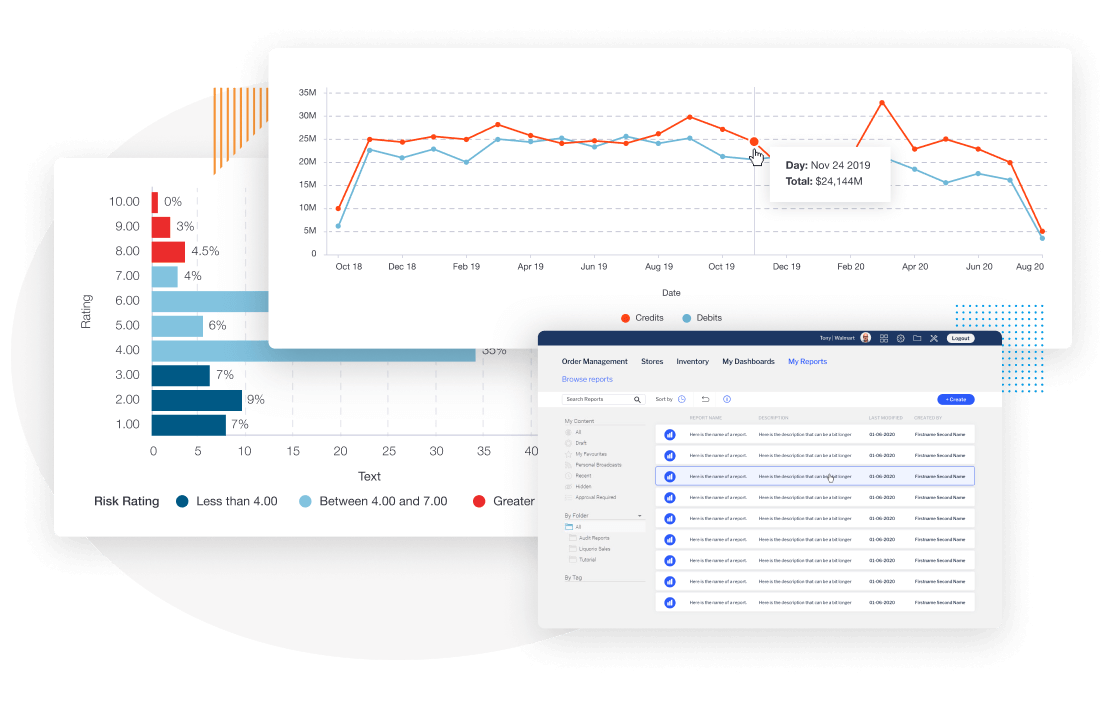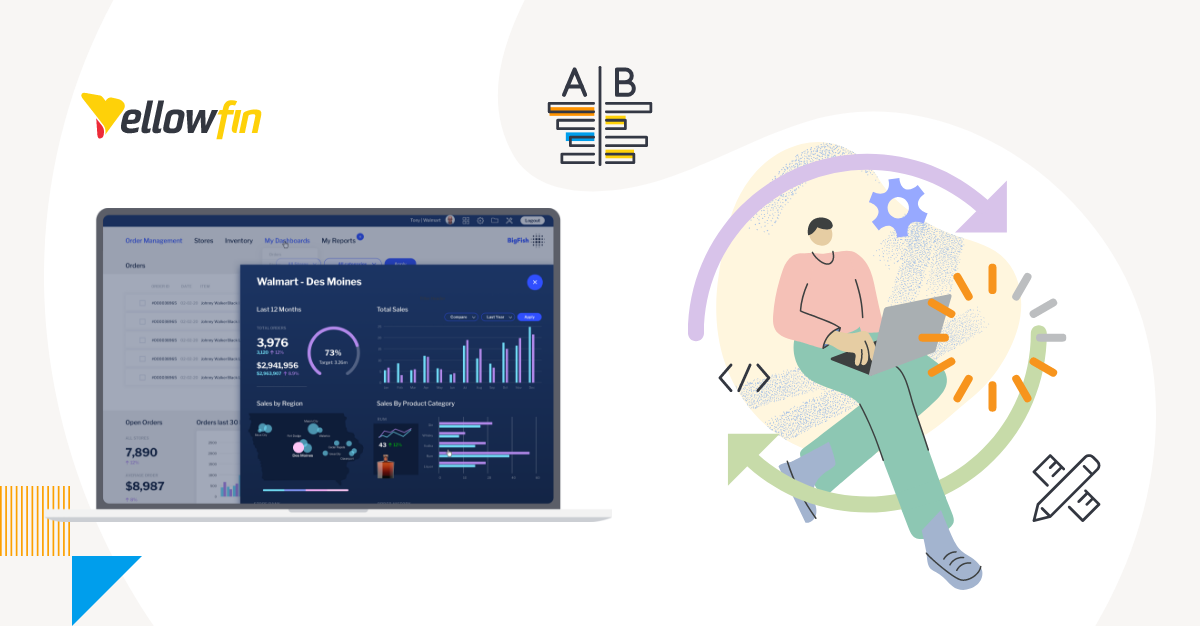
Top 3 Embedded BI SaaS Use Cases for 2026
Key takeaways for embedded business intelligence (BI) in SaaS (TL;DR)
Embedded business intelligence (BI) isn't just about adding charts to your app; it's about making your product experience — and your users — more valuable and competitive.
- Users get more done: Embedded BI enables users to get insights instantly, so they spend less time searching for data and more time using your product.
- They become more successful: Giving users key analytics and insights directly in your app helps them reach their goals faster. and perform true self-service analytics.
- Your product becomes a must-have: Embedded BI provides new ways to monetize your data through premium tiers or data-as-a-service offerings, making your product more valuable.
Blog Contents
show
No more separating analytics from your SaaS
You know that feeling when you're in the middle of a project or work task, and you have to jump out of your main software tool just to find the data you need? That's the problem embedded BI is designed to solve. Instead of sending customers to a separate reporting tool, you give them interactive charts, AI-driven explanations, and self-service exploration right where they’re already working. It’s no surprise the best software-as-a-service (SaaS) companies are turning to embedded BI — analytics software that lives directly inside your product’s interface - to avoid this conundrum. In this guide, we’ll show you three proven ways to embed analytics into your SaaS product so it drives adoption, retention, and growth, all without the pain of building from scratch.Embedded BI: A quick recap
Embedded BI, more commonly referred to as embedded analytics, is an integration of BI solutions within business process applications - essentially, connecting analytics capabilities like augmented analytics, business intelligence dashboards, data analysis, operational reporting, and more, all within your existing software applications. Embedded analytics plays an essential role in normalizing data access and driving adoption outside the data and BI teams. Think of it this way: instead of your customers having to export data or switch to a different platform, they get real-time insights right where they’re already working, and see your product as more valuable and indispensable. Here are some reasons embedded BI should be a key component of your SaaS analytics strategy:- Increase the time spent within the application
- Improve customer satisfaction and user experience
- The higher user adoption rate
- Adds value to the application
- Contributes to revenue growth
- Enhance product competitiveness through embedded analytics SaaS
Most common embedded BI use cases
1. Empowering customers with self-service analytics
In today's fast-paced world, your users don't have time to wait for a data analyst to pull a report. They need to explore and understand their own data, on their own terms, to make faster, smarter decisions. Self-service analytics gives them that power. By embedding customizable dashboards and reporting tools directly into your application, you empower your users to:- Create their own reports and data visualizations without ever leaving your product
- Drill down into the metrics that matter most to them
- Share insights instantly with their teams

2. Unlocking embedded BI for SMBs
Small and medium-sized businesses (SMBs) are drowning in data but starving for insights. They have information scattered across spreadsheets, CRMs, and financial platforms, and they simply don't have the time or resources to stitch it all together. This is where you come in. By using an embedded BI for SaaS solution, you can provide SMB users with a single source of truth, giving them a real-time overview of their business operations. Instead of manually pulling reports and analyzing data, they can see exactly what's happening at a glance. This is a win for both of you. For your customers/end-users, it means they can:- Make faster, smarter decisions by monitoring performance in real time
- Save time and money by eliminating manual reporting
- Gain a competitive edge without hiring a team of data analysts

3. Optimize business processes
Your users are sitting on a goldmine of operational data, but they often can't see the forest for the trees. The day-to-day flood of information from ERPs, CRMs, and other business systems can make it nearly impossible to spot trends, inefficiencies, or opportunities. By using embedded BI for SaaS solutions with with automated alerting capabilities, such as Yellowfin Signals, you can turn that raw data into actionable insights, revealing dynamics within their operations that need attention. This allows your users to track key performance indicators (KPIs) and solve critical problems, all from within your app. For instance, your product, with embedded BI, could automatically:- Detect bottlenecks in their supply/operations chain
- Identify unbalanced IT network loads
- Flag inefficiencies in a manufacturing or system process
What are some other emerging use cases in embedded BI?
In 2025 and beyond, successful SaaS companies are looking beyond basic dashboards to deliver more advanced and innovative BI experiences.Open-source frontend customization
In a mature SaaS market, your product's user experience (UX) is a key differentiator. Your customers expect a seamless, polished interface that feels like a single, cohesive application, rather than a collection of disconnected tools. This is where open-source frontend customization comes in. Instead of being locked into a generic dashboard, embedded BI for SaaS analytics can help your team create an experience that perfectly matches your product's unique brand, UI, and UX guidelines. This level of control allows analytics to feel like a true extension of your product and a familiar interface for your existing user base, and not just a clunky add-on. The best embedded BI solutions provide full white-label analytics capabilities - that is, complete authority to manage presentation layer design elements, including fonts, colors, interactions, and layouts, so analytics appear as product extensions. Yellowfin, for instance, enables developers to embed and style BI elements with modern front-end frameworks through flexible integration options, which grant full control over delivering analytics without sacrificing design consistency or user experience.Semantic data modeling
One of the main challenges with self-service analytics is inconsistent or unclear data. Semantic data modeling solves this by creating a user-friendly layer between raw data sources and the end-user. This layer provides consistent business terms and definitions, making the data more trustworthy for non-technical users. For embedded BI for SaaS platforms, a semantic layer ensures all users, regardless of department or client organization, apply the same logic to data. This consistency builds trust and improves data integrity. Solutions like Yellowfin streamline this process, allowing teams to store their data logic in one place while still enabling users to explore and analyze data independently.AI-powered analytics
AI is being integrated directly into embedded BI features to make analytics smarter and more proactive. Instead of just a dashboard, BI solutions that provide AI analytics (also called augmented analytics) such as Yellowfin provide sophisticated technologies such as AI-powered natural language query (NLQ) and AI assisted insights that present insights in plain, simple language and automatically flag trends and anomalies. This provides immense value without your end-users requiring data expertise to get started.Data monetization
SaaS companies are now treating their data as a new revenue stream, so it is no surprised value is a big part of deciding to buy an embedded analytics solution. Data monetization involves selling specialized analytics to customers. This transforms your product's data into a valuable asset, creating new income and strengthening customer relationships. Using embedded BI platforms like Yellowfin, you can offer features like data storytelling or enhanced dashboards as a premium add-on. This strategy requires multi-tenant data isolation and customizable user permissions to ensure data security and control.Challenges of building your own analytics solution
Building an in-house embedded BI tool may seem appealing at this point, but it's often more challenging and costly than expected, requiring significant investment in staff and infrastructure. Some of the common challenges include:- Scalability limitations: Your homegrown solution can struggle to keep up as your user base and data grow.
- Lack of analytics expertise: Most companies don't have deep, specialized knowledge in analytics, security, and data governance.
- Security and compliance concerns: You become fully responsible for managing data security and complying with regulations, such as GDPR and HIPAA.
- Time-consuming updates: Maintaining and updating the tool will pull your development team away from your core product.
Why embedded analytics can transform your SaaS business
Embedded BI is a powerful way to improve user experience and drive growth. By integrating a solution like Yellowfin, you unlock several key benefits of embedded analytics:- Faster time-to-insight: Users get immediate answers with pre-built dashboards and natural language queries, without needing IT support.
- Increased product value: Adding powerful analytics makes your app stickier and more valuable.
- Revenue generation: Offer advanced analytics as a premium upsell of your SaaS platform, creating new revenue streams.
- Brand differentiation: Yellowfin's customizable UI, along with its data storytelling features, enables you to provide a visually distinctive analytics experience to win against market competition.
 Ultimately, embedded BI solutions like Yellowfin lets your team focus on further innovating your SaaS product while it handles the analytics infrastructure.
Ultimately, embedded BI solutions like Yellowfin lets your team focus on further innovating your SaaS product while it handles the analytics infrastructure.